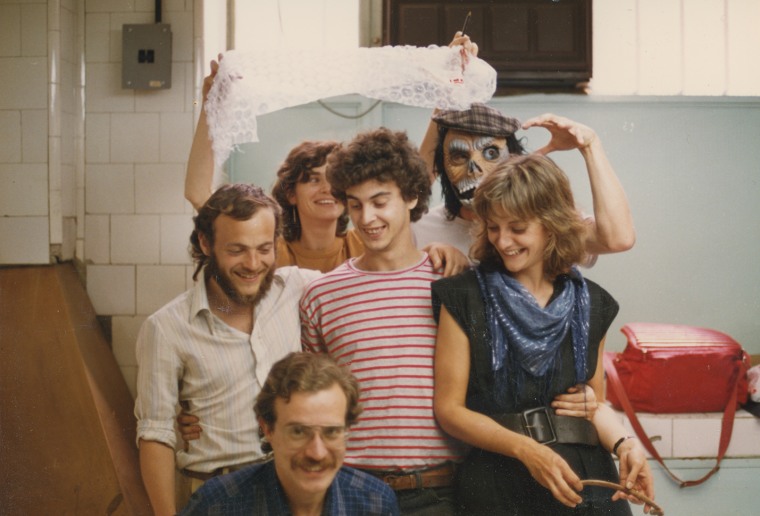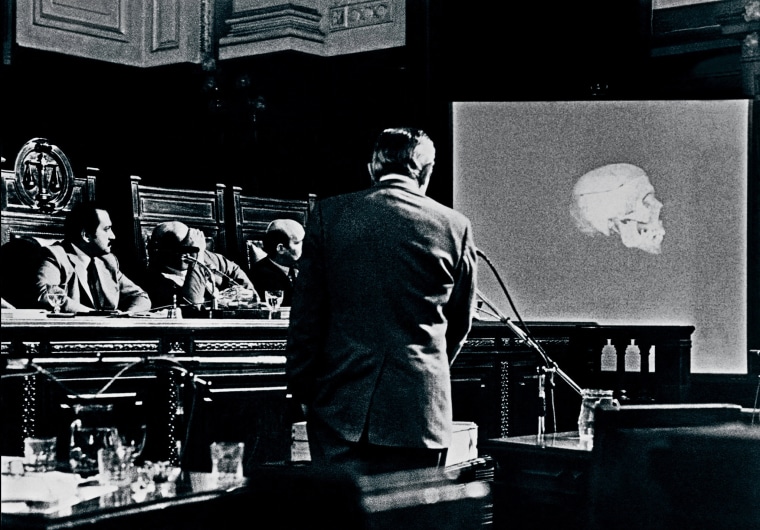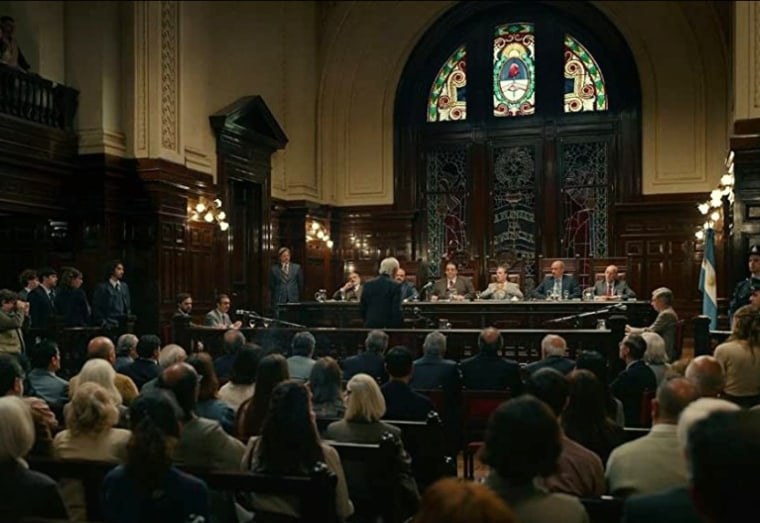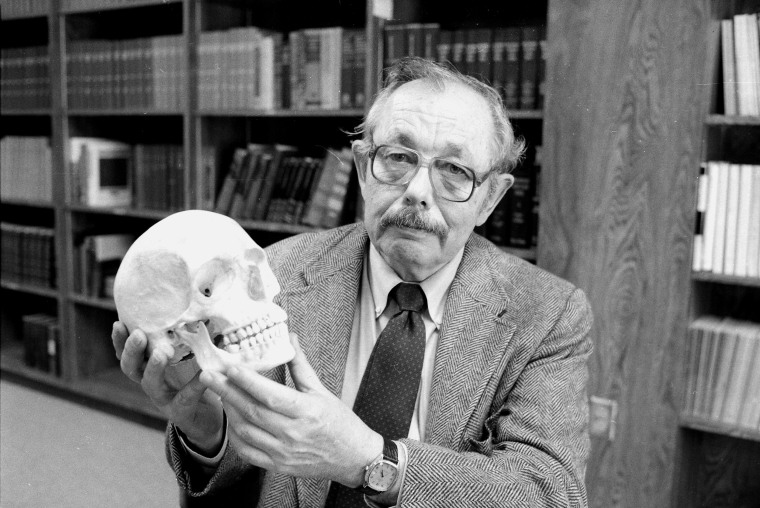Oscar-nominated “Argentina, 1985” tells a very compelling story about a landmark court case brought against former military leaders who were accused of crimes against humanity. But very few Americans today know that one of the key experts presenting evidence in that case was a cigar-chomping, hat-wearing forensic anthropologist originally from Texas, Clyde Snow.
Snow is also the main subject in the new documentary "El Equipo" (The Team), directed by two-time Emmy-nominated Bernardo Ruiz.

Democracy in Argentina was restored in 1983 after a seven-year military dictatorship that resulted in the disappearance of up to 30,000 people. In 1984, Snow was asked to organize a team of forensic investigators to exhume human remains believed to be of those gone missing.
The young members of that team later went on to do forensic work in more than 60 countries — and were even nominated for the Nobel Peace Prize in 2020.
“For me, what makes Snow and this team so interesting is that they are a linking thread between different histories,” Ruiz said in a phone interview with NBC News. “While each case is specific to each country, the team takes the same scientific approach to connect all of the dots for the families of the disappeared.”
Ruiz's documentary uses archival footage and testimony to tell a story about the scientists who helped gather evidence for the prosecution against the military regime — and ushered in the use of this kind of investigation to advance human rights.
“Every skeleton that we find, every skull with a bullet hole in it adds a little more to our knowledge of how this system of repression and mass murder operated,” Snow says in the documentary.
Ruiz interviewed Snow in January 2013, 16 months before his death.
“Argentina, 1985,” which won the Golden Globe for best foreign language film and is nominated for an Academy Award in the same category, doesn’t make specific reference to Snow. But movie watchers will see Snow represented near the middle of the film: His character, a silver-haired man in a suit with his back to the camera, is seen testifying in the courtroom in front of an enlarged image of a skull that the prosecution is presenting.
The scene is based on a famous photo taken of Snow during the trial.


Bones tell the tale of the death squads
Clyde Snow’s 2014 obituary in The New York Times described him as a larger-than-life forensic detective who liked to say that a skeleton “could sketch the tale of a human life.”
In his six-decade career, Snow solved numerous heinous murder cases and identified victims before DNA matching was available — sometimes relying on dental records, bone textures, old fractures and low-tech equipment.
Snow’s obituary notes that he famously investigated the remains of President John F. Kennedy; the Nazi concentration camp doctor and war criminal Josef Mengele; the victims of the serial killer John Wayne Gacy and the ancient Egyptian pharaoh Tutankhamen.
Two articles published by The New York Times and The Washington Post in 1987 reported that Snow arrived in Argentina in June 1984 at the request of the newly elected democratic government of President Raúl Alfonsín.
Chief prosecutor Julio Strassera — played in “Argentina, 1985” by one of the country’s best-known actors, Ricardo Darín — reportedly asked Snow to testify at the trial.
The forensic anthropologist told the court about a young pregnant woman — Liliana Pereyra — who had been abducted and executed after giving birth to her child.
Snow was able to determine that she gave birth because the shape of her pelvic bones had changed. The documentary explains how death squads kept women alive long enough to deliver their babies and then exploited the infants or sold them to other people — an ongoing issue for families in Argentina and those investigating the legacy of that time.
After the court case, Snow returned to Argentina in April 1986 to help set up a special commission and laboratory that could continue gathering more information about the missing.
Even after Snow moved on to other cases, Ruiz said, he continued to mentor the young forensic investigators in Argentina who became a world-renowned investigative team.
Taking on human rights cases across the globe
When Snow arrived in Argentina, Ruiz said, he had a difficult time finding pathologists and scientific experts who had not been compromised by the military regime.
So Snow decided to recruit graduate students who were too young to be influenced by the dictatorship; many were as young as the young victims they were digging up.
One founding member of the Argentina team profiled in the documentary is Luis Fondebrider. At age 19, he took a window screen from his mother's house to sift dirt and collect human remains with Snow.
During their first exhumation in July 1984, the forensic team uncovered the bones of a woman with a gunshot wound to the head.
Snow says in the documentary that this first encounter with the remains of a victim made another young team member, Patricia Bernardi, cry. But a few minutes later, Bernardi returned to the site where a medical student was carefully digging around the skull with a spoon. They had very limited resources, so she had asked her teammate for the spoon to make coffee.
That's the moment, Snow says in the documentary, when he realized he had a forensic team capable to do the job.
Ruiz's documentary focuses mainly on three of the members from the initial team — Fondebrider and Bernardi, as well as Mimi Doretti — as they follow in the footsteps of Snow and search for victims of people missing outside of Argentina.
One of the sites they inspect is the village of El Mozote in El Salvador, where U.S.-trained Salvadoran soldiers killed almost 1,000 people as the military fought left-wing guerillas — the site of the largest single massacre in the modern history of Latin America.
Looking back at the founding members, Ruiz describes their investigative work as the “Where’s Waldo” of the forensic world.
“You can pick a conflict from the last three or four decades, and the Argentine forensic anthropology team has labored behind the scenes,” he said. “They are collecting evidence for human rights trials, corroborating events; and most importantly, working very closely with families who lost loved ones.”
The documentary "El Equipo" is currently showing in different festivals and will premiere on “Independent Lens” from PBS this fall.
